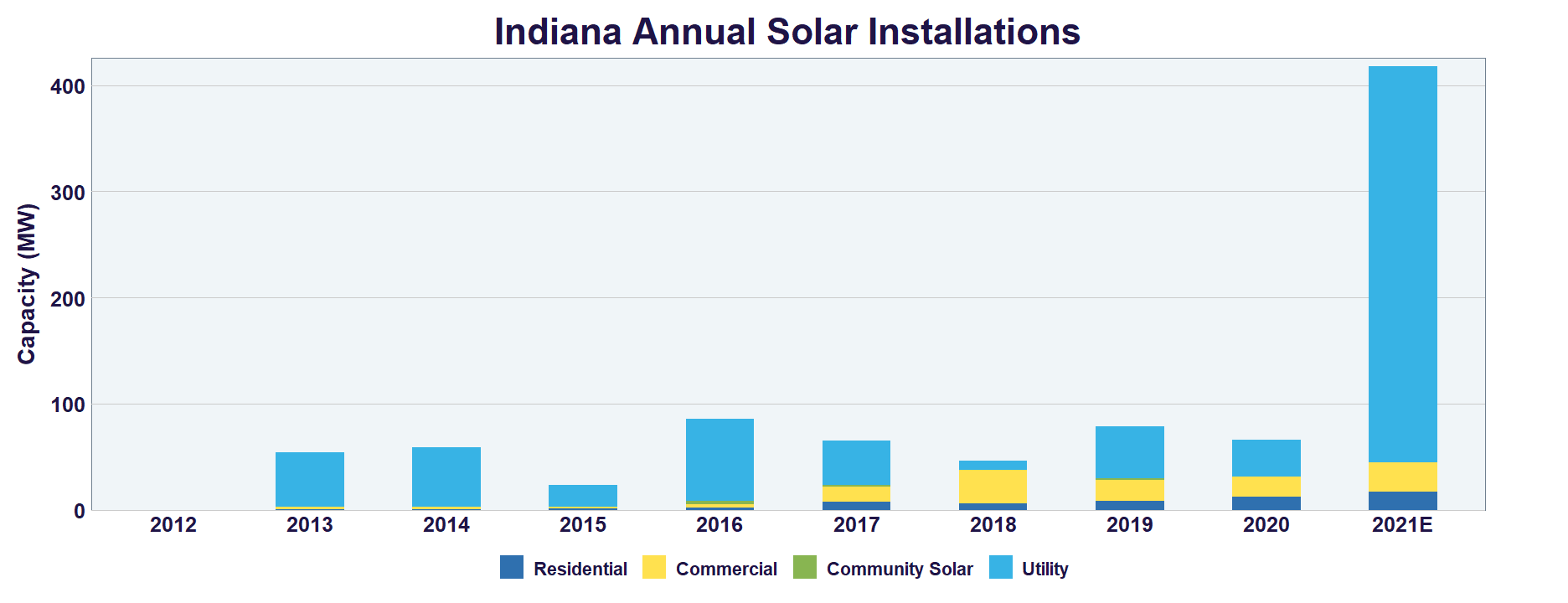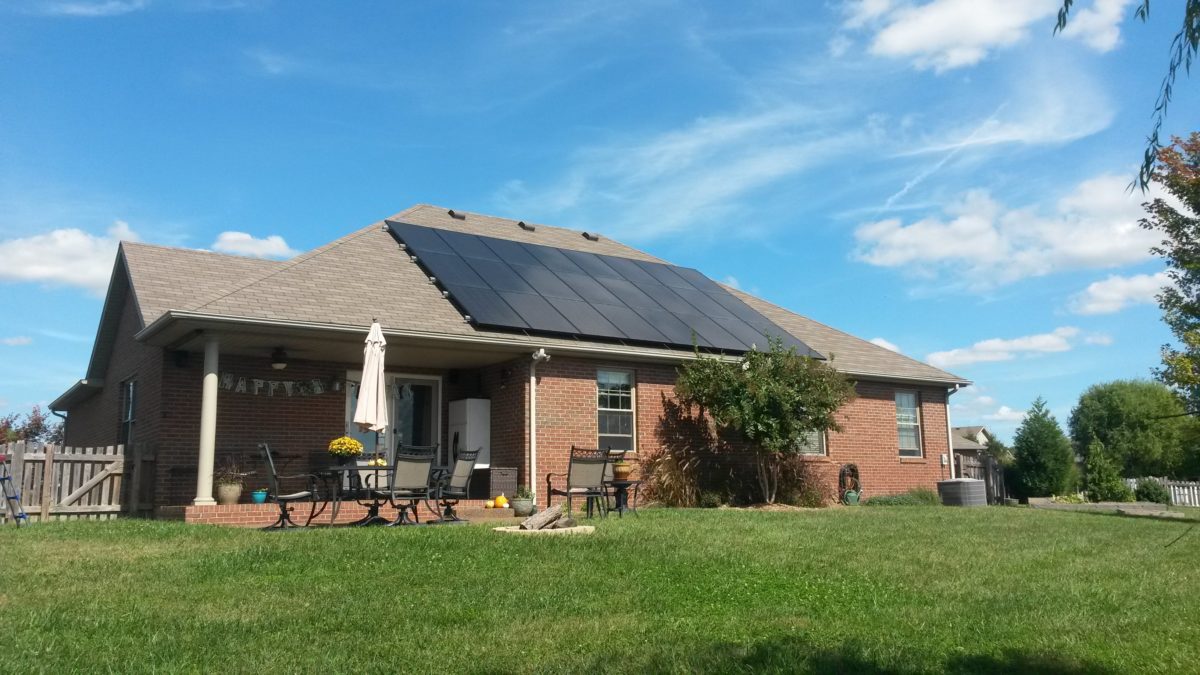It has been nearly five years since Indiana Senate Bill 309 was signed into law as Senate Enrolled Act 309 (SEA 309) by Gov. Eric Holcomb in May 2017, a law which significantly reduced the rates that the state’s net metering customers received and which contributed to the relatively limited rooftop solar and larger distributed generation (DG) market within the state.
SEA 309 phased out retail rate net metering and replaced the former 1:1 kilowatt-hour bill credit with a much smaller credit based on 125% of the utilities wholesale rate. That change in compensation resulted in a bill credit that is approximately 70-80% lower than what customers receive for retail rate net metering.
While this changed the level of compensation that solar homeowners would receive, it did not change the method by which the compensation rate would be applied. Homeowners would still be credited at that rate, multiplied by the kWh difference between the electricity that they imported from the grid and the electricity they exported to the grid.
One of the state’s investor-owned utilities, CenterPoint, attempted to change how the bill credit was calculated on customers’ monthly bills by eliminating this netting altogether, replacing it with a tariff provision that charged DG customers the retail rate for every kWh delivered by the utility and credited customers at the much lower 125% of wholesale rate for every kWh of energy delivered by the customer to the grid.
This change was initially approved by Indiana Utility Regulatory Commission, but was challenged in the Indiana Court of Appeals by a broad coalition of solar companies, environmental and consumer advocates, led by the Indiana Office of Utility Consumer Counselor. On January 28, the coalition won their appeal, and the decision was overturned.
CenterPoint’s proposed calculation had the potential to be approved and become the calculation methodology used by all investor-owned utilities within the state. Advocates argued that if the approval was achieved, the tariff provision was expected to drastically slow down rooftop solar adoption in the state.
“Fair, accurate compensation is the key to expanding residential solar,” said Vote Solar’s Regulatory Director of the Midwest, Will Kenworthy, who served as an expert witness in the proceeding. “CenterPoint’s proposal was neither fair nor accurate, and I’m glad the court recognizes that. Monthly netting makes sense and is a win for Indiana ratepayers who use their hard-earned money to add more solar to the grid.”
Where does Indiana stand?
With nearly 1,350MW of solar in all forms installed in the state thus far, according to the Solar Energy Industries Association (SEIA) and Wood Mackenzie, Indiana has been by no means a national leader in supporting the resource, but is one of the handful of states to have more than 1 GW of installed capacity. Over the next five years, however, the state is expected to add 5,971MW of new solar, good for 4th in the nation over that period, though the vast majority of these additions are expected to come on the utility-scale side, as the state’s utilities begin to retire their expansive coal fleets.
To date, the state’s residential solar market has been relatively tame, as illustrated by the graph below, and Indiana’s newfound love for large-scale solar likely won’t reflect an increased commitment to installing DG.

While the recent CenterPoint decision prevented further harm to the state’s DG industry, advocates have pointed out that there is still considerable work to be done if that industry hopes to achieve the same success that large-scale solar has found in the Hoosier State.
“This decision comes at a critical time for the Indiana solar industry,” said President of Indiana Distributed Energy Alliance, Laura Ann Arnold. “Solar companies testified that CenterPoint’s proposal would have a devastating impact on both solar/DG providers and their customers. Because there are other similar tariffs already approved or pending, this decision has potential statewide impact much larger than SW Indiana where CenterPoint operates.”
This content is protected by copyright and may not be reused. If you want to cooperate with us and would like to reuse some of our content, please contact: editors@pv-magazine.com.









By submitting this form you agree to pv magazine using your data for the purposes of publishing your comment.
Your personal data will only be disclosed or otherwise transmitted to third parties for the purposes of spam filtering or if this is necessary for technical maintenance of the website. Any other transfer to third parties will not take place unless this is justified on the basis of applicable data protection regulations or if pv magazine is legally obliged to do so.
You may revoke this consent at any time with effect for the future, in which case your personal data will be deleted immediately. Otherwise, your data will be deleted if pv magazine has processed your request or the purpose of data storage is fulfilled.
Further information on data privacy can be found in our Data Protection Policy.